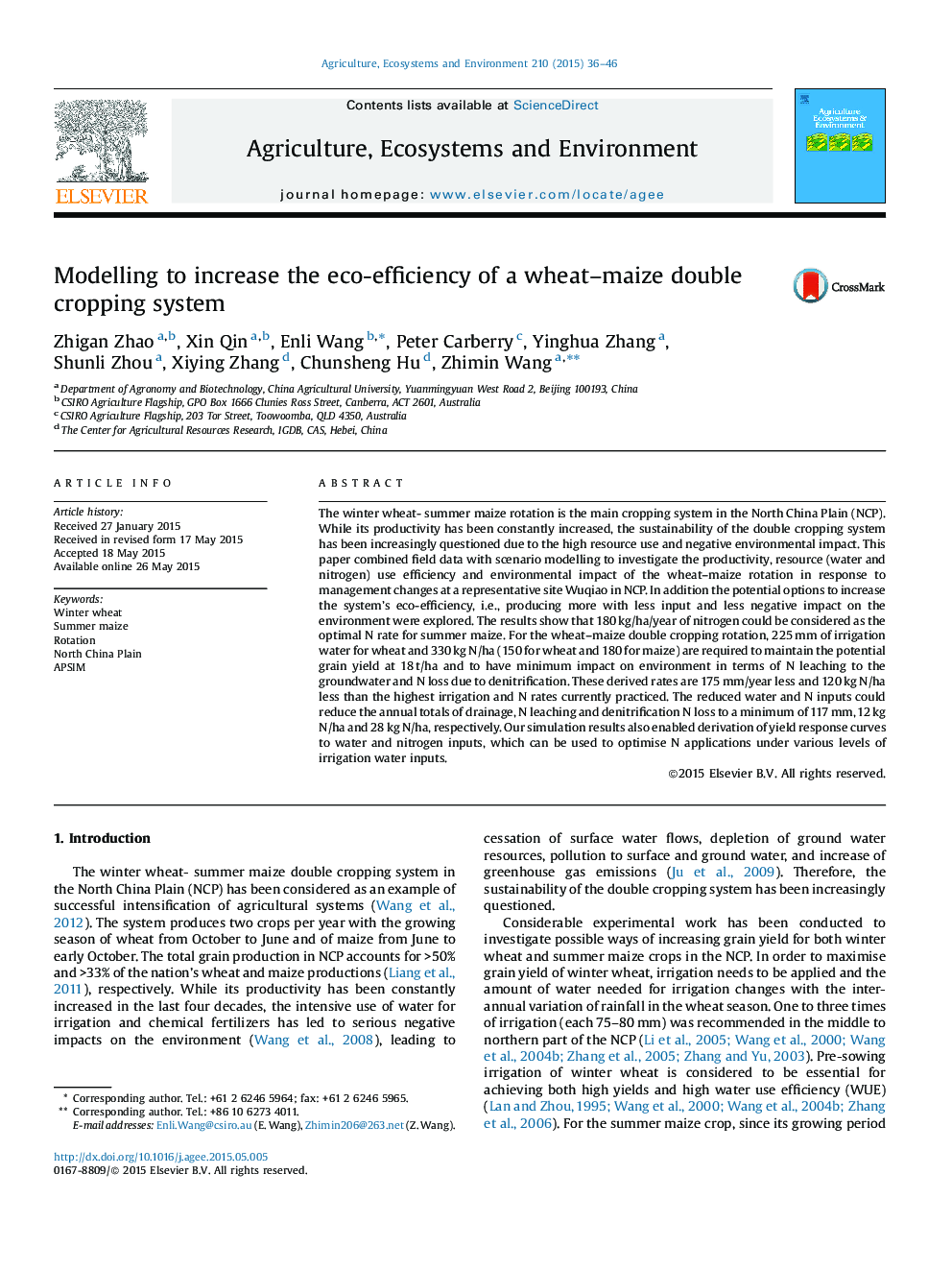| کد مقاله | کد نشریه | سال انتشار | مقاله انگلیسی | نسخه تمام متن |
|---|---|---|---|---|
| 2413705 | 1552042 | 2015 | 11 صفحه PDF | دانلود رایگان |
• Modelling was used to quantify eco-efficiency of a wheat–maize rotation in NCP.
• Results revealed potential improvement in current water and N management.
• To maintain yield potential of 18 t/ha only needs 225 mm irrigation and 330 kg N/ha.
• This leads to saving of 175 mm water and 120 kg N/ha compared to current practice.
• The annual drainage and N loss are reduced to 117 mm and 40 kg N/ha.
The winter wheat- summer maize rotation is the main cropping system in the North China Plain (NCP). While its productivity has been constantly increased, the sustainability of the double cropping system has been increasingly questioned due to the high resource use and negative environmental impact. This paper combined field data with scenario modelling to investigate the productivity, resource (water and nitrogen) use efficiency and environmental impact of the wheat–maize rotation in response to management changes at a representative site Wuqiao in NCP. In addition the potential options to increase the system’s eco-efficiency, i.e., producing more with less input and less negative impact on the environment were explored. The results show that 180 kg/ha/year of nitrogen could be considered as the optimal N rate for summer maize. For the wheat–maize double cropping rotation, 225 mm of irrigation water for wheat and 330 kg N/ha (150 for wheat and 180 for maize) are required to maintain the potential grain yield at 18 t/ha and to have minimum impact on environment in terms of N leaching to the groundwater and N loss due to denitrification. These derived rates are 175 mm/year less and 120 kg N/ha less than the highest irrigation and N rates currently practiced. The reduced water and N inputs could reduce the annual totals of drainage, N leaching and denitrification N loss to a minimum of 117 mm, 12 kg N/ha and 28 kg N/ha, respectively. Our simulation results also enabled derivation of yield response curves to water and nitrogen inputs, which can be used to optimise N applications under various levels of irrigation water inputs.
Journal: Agriculture, Ecosystems & Environment - Volume 210, 1 December 2015, Pages 36–46
